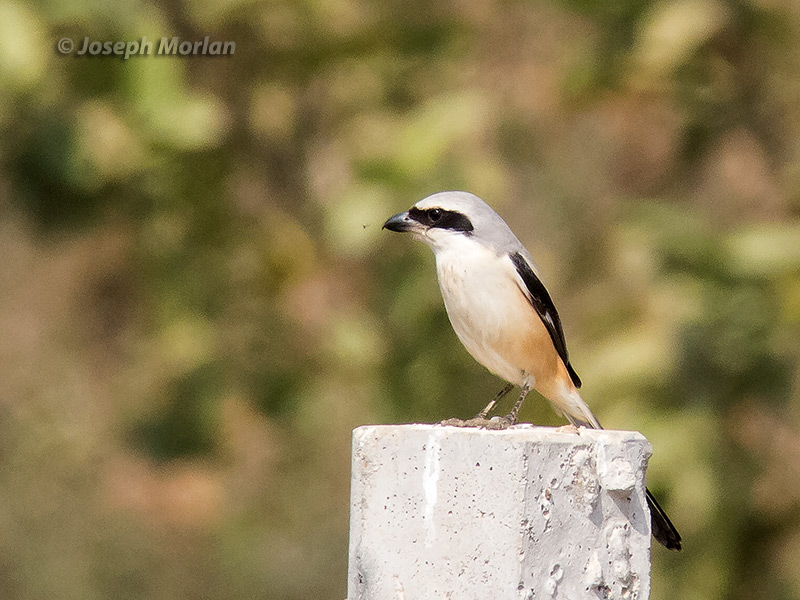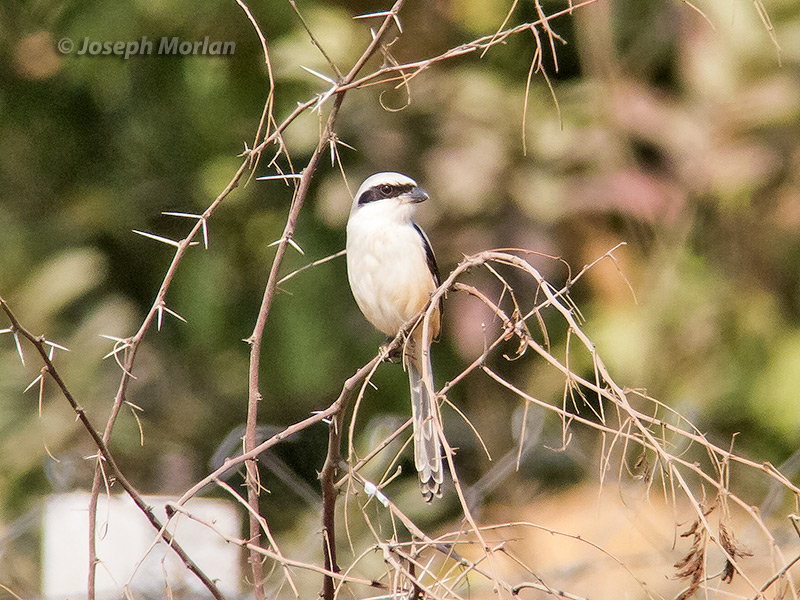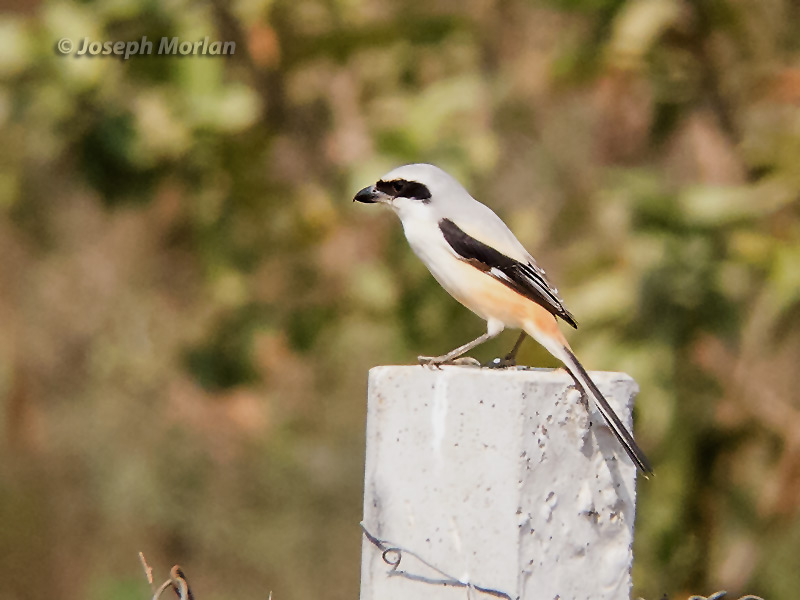


This highly variable species ranges through most of the Oriental faunal region. Of the nine subspecies, only three are found in India. Based on range this bird should be the rusty-backed L. s. erythronotus, but it looks more like the paler L. s. caniceps which replaces it to the south along a line from Kutch to Andhra Pradesh. This individual has only a vestige of rufous on its scapulars with the rest of the mantle appearing pale gray. Only the flanks, rump and uppertail coverts show rufous. It also has a very narrow area of black across the forehead. These are features more typical of L. s. caniceps. Cf. Plate 4 in Lefranc and Worfolk (links below). However subspecies are defined based on average geographic differences so I have provisionally labeled this bird as a pale example of L. s. erythronotus. It may be an intergrade with L. s. caniceps. Both are members of the small, pale headed erythronotus group. Corrections always welcome. Digiscoped with Panasonic DMC-LX5 | Nikon FieldScope III | 30XWA | hand-held (no adapter)
References:
Lefranc, N and Worfolk, T. 1997. Shrikes: a guide to the shrikes of the world. Yale U.P. Preview of sections on Long-tailed Shrike including color plate and subspecies map.
Panov, E. 2011. The True Shrikes (Laniidae) of the World. Pensoft.